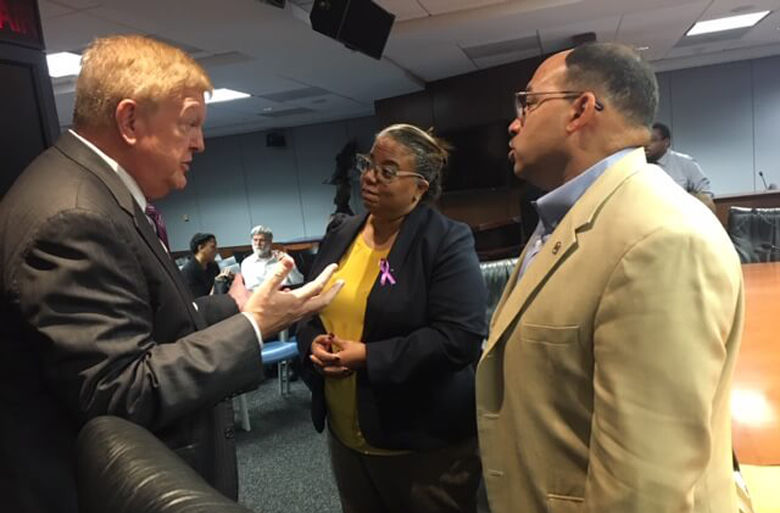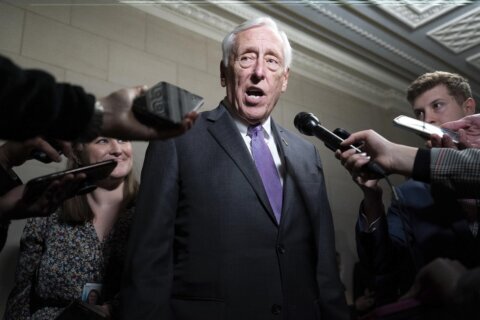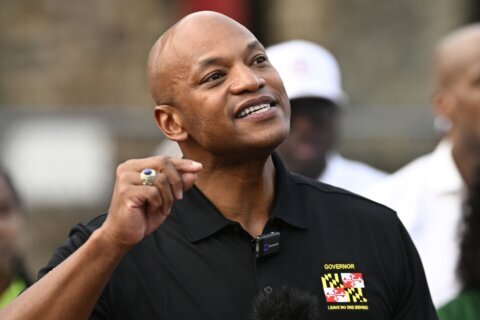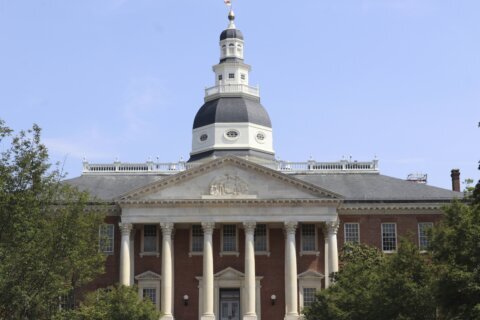This article was republished with permission from WTOP’s news partners at Maryland Matters. Sign up for Maryland Matters’ free email subscription today.
This content was republished with permission from WTOP’s news partners at Maryland Matters. Sign up for Maryland Matters’ free email subscription today.

As he travels the state with top administrators from the Maryland Department of Transportation, Secretary Pete K. Rahn hears a frequent plea from business leaders, environmentalists and the public — expand bus and rail options, so travelers don’t have to be so dependent on their cars.
Rahn has a ready response for transit advocates: Under Gov. Lawrence J. Hogan Jr. (R), Maryland is spending more on transit than at any other time.
“We’re at 42 percent of the state [transportation] trust fund going to transit already, with 3 percent of the revenues coming from transit,” Rahn told a reporter in Prince George’s County, following the MDOT’s capital budget briefing there on Friday.
Indeed, Hogan’s decision to green-light the Purple Line early in his first term and his push to give the Washington, D.C., area’s Metro system the first-ever dedicated source of funding in its history earned him widespread praise.
But in talking with county, state and municipal officials from Prince George’s County at Friday’s “road show” presentation in Upper Marlboro, Rahn offered another reason why the state won’t be providing all the funding transit advocates might want.
Asked by County Council Chairman Todd M. Turner (D) about on the possibility of “additional revenue,” Rahn said, “Gov. Hogan has said we are not going to be raising taxes, we’re not going to raise fees. I think for us realistically — if we’re going to take on some of these larger projects that remain — it’s going to take a healthy federal program.”
Rahn’s statement reflected a reality that Turner and other officials understand, even if they don’t like it. Hogan scored an upset win the 2014 race for governor by tapping into the public’s frustration with taxes, and as he proceeds through his second term with robust job-approval numbers, he’s not turning back.
Despite the secretary’s candor, local officials and members of the public who testified at the hearing on the state’s rolling transportation plan — the FY 2020-2025 Consolidated Transportation Program — peppered him with requests for expanded rail and bus service:
— Sen. Malcolm Augustine (D-Prince George’s) expressed concern about the state’s decision not to include dedicated bus lanes in its planned widening of the Capital Beltway.
Transit options were dropped from further study “because they could not pay for themselves… because we have no additional resources to pay for things that need to be subsidized,” Rahn told the lawmaker.
He also noted that MDOT has decided to allow bus rapid transit service to use the express toll lanes that the state is seeking to add. That, he said, would allow commuters to travel between 45 and 55 miles an hour, a speed that would have them zooming past motorists who frequently endure delays on that road at rush hour.
— Greenbelt Mayor Emmett V. Jordan said city officials were “very disappointed” that the state removed funding to complete the interchange that carries traffic from the Capital Beltway to and from the Greenbelt Metro Station, an area he called “prime for development.”
Rahn told the mayor the funding was removed when the FBI dropped plans to build a new headquarters somewhere in the Washington, D.C., suburbs. Greenbelt had been one of three finalists for the construction.
— When Councilmember Mel Franklin (D) made a pitch for a new bus rapid transit from Southern Maryland to the D.C. area, Rahn again referenced the state’s limited ability to finance expansion.
“To my knowledge, there is not a transit system in the United States that pays for itself. It just means that if transit is wanted, there has to be a long-term plan for it,” he said.
MDOT’s statewide tour takes Rahn and his team to the state’s 23 counties and the City of Baltimore every year. Even as he touts the state’s record investments, he has been repeatedly urged to boost transit funding even further.
On Monday the CTP “road show” reaches Montgomery County, where state and local officials are expressing anger with the state’s decision to offload responsibility for the long-planned Corridor Cities Transitway onto the county. Advocates for that project, an upcounty bus rapid transit line that would connect Montgomery’s burgeoning biotech communities, are expected to press Rahn to partner with with the county on the CCT going forward.
They should not expect good news.
“We have a major issue,” Rahn said Friday after his briefing in neighboring Prince George’s. “Transit is becoming unsustainable within the [state transportation] trust fund and maintaining a highway system that 82 percent of Marylanders use.”







